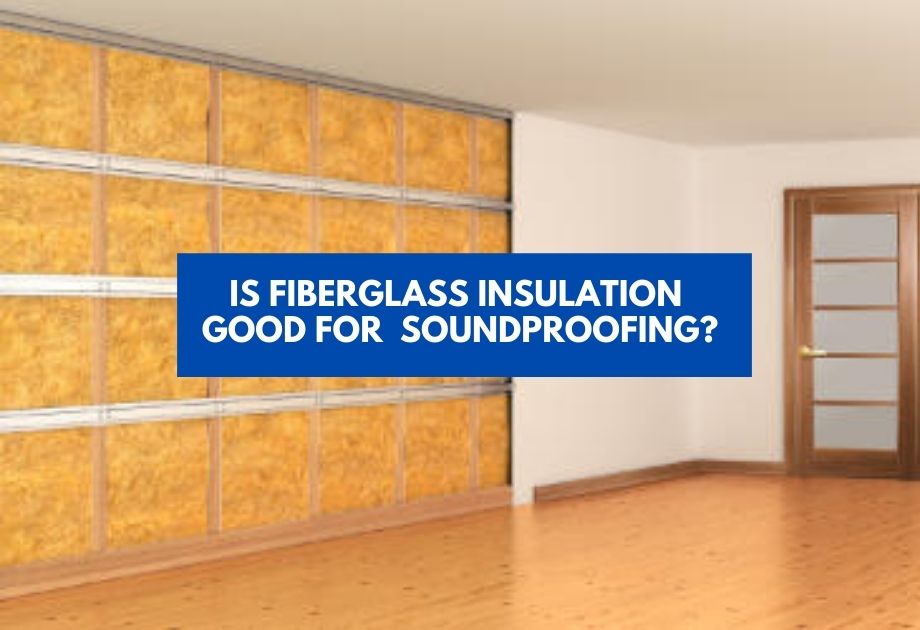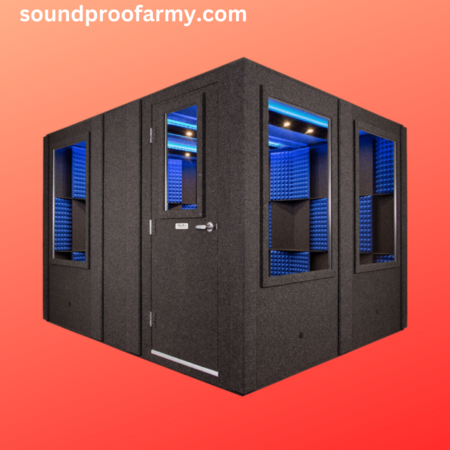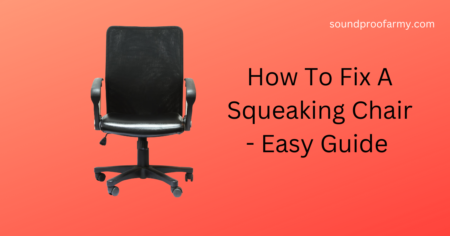Soundproofing your walls is a great DIY project for the handy homeowner. But it’s quite expensive if you don´t do proper research before buying any material. Acoustic wallpaper is good for soundproofing but in reality, does acoustic wallpaper work?
If you are looking for the cheap and best soundproofing solution, you should go for acoustical wallpaper. These are also known as diffuser wallpapers because they scatter noise in all directions and can be applied on both walls and ceilings.
These easy-to-install acoustic panels absorb sounds that might otherwise bounce off a room’s surfaces – like plasterboard partitions inside the building envelope – and send them back into space.
It is done by adding materials such as fiberglass batting onto regular wallpaper backing paper, which will help reduce unwanted noises from outside infiltrating your home when put up on drywall.
These works prevent not only excessive reverberation but also interrupt echoes of those annoying high-decibel noises that make life intolerable at times!
Table of Contents
What is Soundproof or Acoustical Wallpaper? A Quick Overview.
Acoustic wallpaper can help soundproof your room walls and reduce some amount of noise and is affordably priced.
They are not the same as an acoustic soundproofing material, which is applied to one side of a wall or ceiling to block out noise in an enclosed space like a room, office, studio recording booth, etc.
Acoustical wallpaper can be used on both interior and exterior walls and contain sound-absorbing fibers.
What Turns You Soundproof Your Walls?
Soundproofing your room can be a great way to block out unwanted sounds as well. When you have noisy neighbors or noisy traffic outside of your window, sound insulation is the best way to reduce this noise and make it more enjoyable in general.
Many reasons turn you up for using the soundproofing wallpapers, which includes
- Shared walls
- Loud neighbors
- Dance parties at your home or neighbor’s home
- Densely traffic noise area
A few of these examples are related to annoying reasons that make you think of soundproofing your walls.
Acoustical or Soundproof Wallpaper is DIY Friendly?
Soundproof wallpaper is easy to install and can be applied to any surface in your home, business or office. Soundproof wallpaper is made from a non-woven material with a unique sound-absorbing core. The material is durable and flexible and can be applied directly to walls and surfaces in your home, office, or business space. With this product, you can create a soundproof room or acoustic studio in your house, office, or business without the high cost of traditional soundproofing solutions. Soundproof wallpaper is easy to apply yourself. Peel off the backing paper and apply directly over the wall. Soundproof wallpaper can be removed at any time without any residue.
Benefits of The Soundproof Wallpaper
The benefits of soundproof wallpaper are numerous. If you’re a family with children who like to play music or be boisterous, the acoustic soundproofing on your walls will help keep outside noise out and give them their own space without disrupting others in the house.
1-Installation
Installation of soundproof or acoustical wallpaper is easy, and you can install them by yourself. You cover the wall with a layer of primer, then apply your vinyl. Once you are done with that, all you have to do is paint over it, and voila!
You can also use soundproof wallpaper for an office or bedroom if noise is an issue. It’s easy to install yourself, so there’s no need to involve anyone or any professional.
2-Add Extra Styling to Your Home
Soundproof wallpaper comes in different designs and patterns and different colors and gives your home and walls a beautiful look.
For example, soundproof bamboo wallpaper has the natural pattern of bamboo.
If you want to create a contemporary look in your home, a black and white modern design is perfect for this.
Acoustic or soundproofing wallpaper can also be used on walls that are not made out of concrete, like plasterboard. It will give your walls a new and better look with no need for extra decorations.
3-Affordability/Cost-Efficient
Soundproof wallpapers are affordable and cost-efficient because they can be installed on a budget without any professional help.
The affordability of soundproof wallpaper results from its lightweight construction material that provides excellent absorption while being incredibly easy to install.
These wallpapers will not take more than 100$ per room of 12X12 ft. size of the room. The cost may change as per your required size of sheeting.
Soundproof wallpapers are an efficient way to save money on insulation and soundproofing because it is easily installed with the help of a friend or family member who can act as your assistant in applying the wallpaper, thus reducing labor cost by 50%.
4-Heat and Fire Resistance
Acoustic wallpapers are heat and fire-resistant and have a low smoke generation rate.
Acoustic wallpapers are soundproof and fire-resistant. They reduce noise levels by up to 50%.
These wallpapers reduce the factor of your walls getting fire when there is a short circuit or smoke caused by any accident.
Some Extra Ways to Increase the Effectiveness of Soundproof or Acoustical Wallpaper
Soundproof Paint
Add a thin layer of paint underneath your acoustic wallpapers to add extra effectiveness to your soundproofing requirements. You can use soundproof paint underneath your acoustical wallpaper for better results.
Soundproof paint provides a quick and cost-effective way to increase the effectiveness of soundproof or acoustical wallpaper. Sound can be transmitted through walls, ceilings, floors, windows, and doors using conduction (sound waves carried by solids) and air pressure disturbances.
Decorative Panels With Noise Insulation
Another alternative of soundproof wallpaper, these panels are made up of polyester and have a structure that traps the noise produced inside the room and prevents sound from leaking outside. Although they are not as effective as soundproof paints, these panels help in reducing noise levels by about twenty decibels of sound pressure level (SPL).
Acoustic Foam Panels
Acoustic foam panels are soundproofing materials that can be installed in a wall or ceiling. They reduce sound transmission across the panel’s face and from room to adjacent rooms through connecting walls, ceilings, floors between two spaces.
Acoustic foam panels have a wide range of designs, styles, and colors. The thickness of the acoustic foam panels depends on your area and the amount of noise you want to reduce.
Mass Loaded Vinyl
Mass Loaded Vinyl is a vinyl used for soundproofing that also has added weight. It’s most often seen as green or brown, and it can be cut into different shapes to increase its effectiveness in corners of rooms where both walls are meeting at the corner. Mass-loaded vinyl is an easy way to increase acoustic wall treatments. Use MLV with aural wallpaper for extra effectiveness to soundproof your walls at home, office, apartment, etc.
MLV is not quite appealing to your eyes; if you want to add decor with soundproofing wallpaper, you can go for other DIY Alternatives.
Cellulose Insulation
Cellulose insulation is a natural, renewable fiber. Cellulose is not an air-tight material.
Insulation may be combined with soundproofing materials to make them more effective in dampening noise.
It is mainly used as heat insulation in older times, but applying it in the right way can also help soundproofing needs.
Wall Hangings and Decorations Help in Reducing the Noise
Wall hangings and decorations help increase the effectiveness of soundproof or acoustical wallpaper. These can be used to put them at a midpoint on either side of an open doorway, as long as they are not touching each other.
Filling your walls, rooms, surface with furniture helps absorb the sound and prevents the traveling of sound between hardcovers.
It is important to note that soundproof or acoustic wallpaper doesn’t work for all noise. In the case of a loud party, you will need something like heavy curtains over your windows with an extra layer of closed doors, and it also helps if there are some plants in the room.
Dual Pane Windows
Dual pane windows help reduce the noise and are a good option for those looking to get soundproofing homes without having to do any work on their walls.
As the name shows, these windows have dual and removable glasses, one of which can be opened or closed depending on the need.
Dual pane windows are also called soundproof windows, and now you know that it is not just a name as they help reduce noise very effectively.
Weather Stripes
Weather stripes help in reducing the noise and are also used for filling gaps. Weather stripes are made of a weather stripping material that reduces unwanted sound and drafts from entering your home or office space.
Weather stripes can be used in a variety of places. Weatherstripping is also known as weatherstripping, and it is designed to fill gaps at the edges of doors or windows where they meet walls. Weatherstrips are available for both swinging and sliding doors.
It also helps reduce noise from outside coming into your home or office space through cracks between the window trim and siding, under doorways without thresholds, around pipes that protrude from exterior building surfaces (such as chimneys), etc.
Weatherstrip fills these spaces with an elastic sealant which reduces drafts while still allowing fresh air to enter if desired using durable Weatherstrip materials built to last up to 20 years against extreme temperatures.
Pros and Cons of Acoustical Wallpapers
Pros
- Not too much expensive (affordable)
- Easy installation
- Plenty of patterns and designs are available
- Manages room soundproofing
- Heat and fire-resistant
Cons
- Didn’t soundproof 100 percent
- Doesn’t works on its own (needed other acoustical sources)
- Not practically durable
- Having humidity
Final Words On Alternatives of soundproof or acoustical wallpapers and how do they work??
Soundproofing wallpapers fill these spaces with an elastic sealant which reduces drafts while still allowing fresh air to enter.
Acoustical wallpaper doesn’t soundproof 100 percent and needs other acoustics sources too, but it manages room soundproofing better by increasing the absorption of airborne noise.
It also helps to have a comfortable temperature when you are near fire or heat sources because they are resistant to extreme temperatures for up to 20 years.
However, if there is humidity inside your home, this might not work that well as moisture can cause damage on its surface and make it less durable than before.
Nevertheless, both methods have their pros and cons, so we recommend that people who want to be more practical about things should go with acoustic materials.

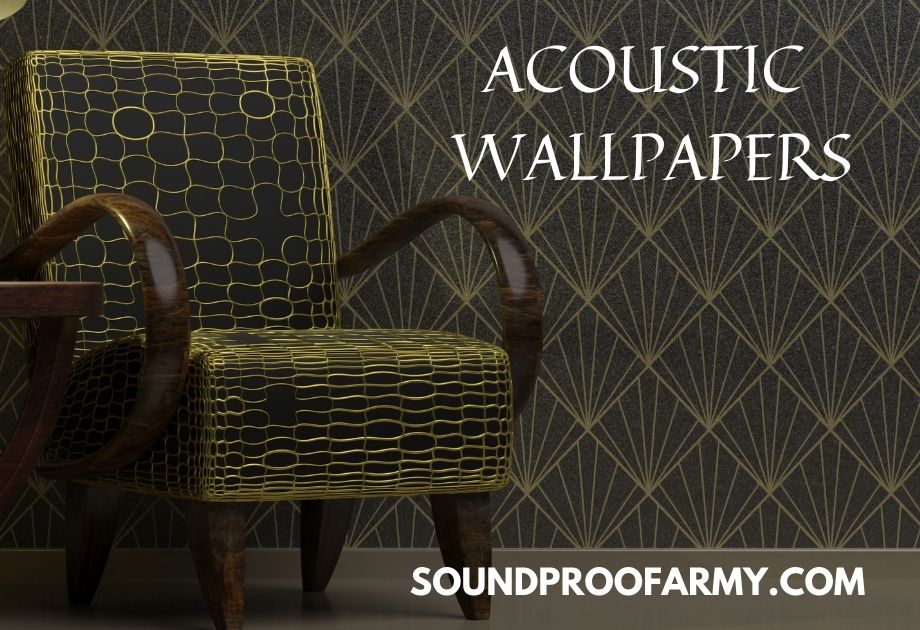



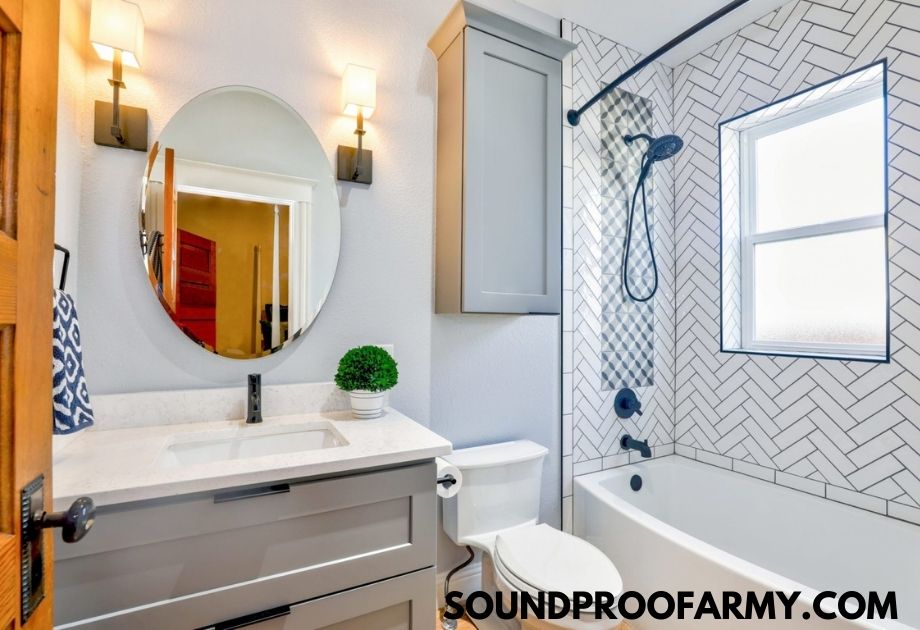
![How To Soundproof A Basement Ceiling Cheaply [9 Ways]](https://soundproofarmy.com/wp-content/uploads/2021/06/cheapest-ways-to-soundproof-basement-ceiling-Simple-DIY-Hacks.jpg)
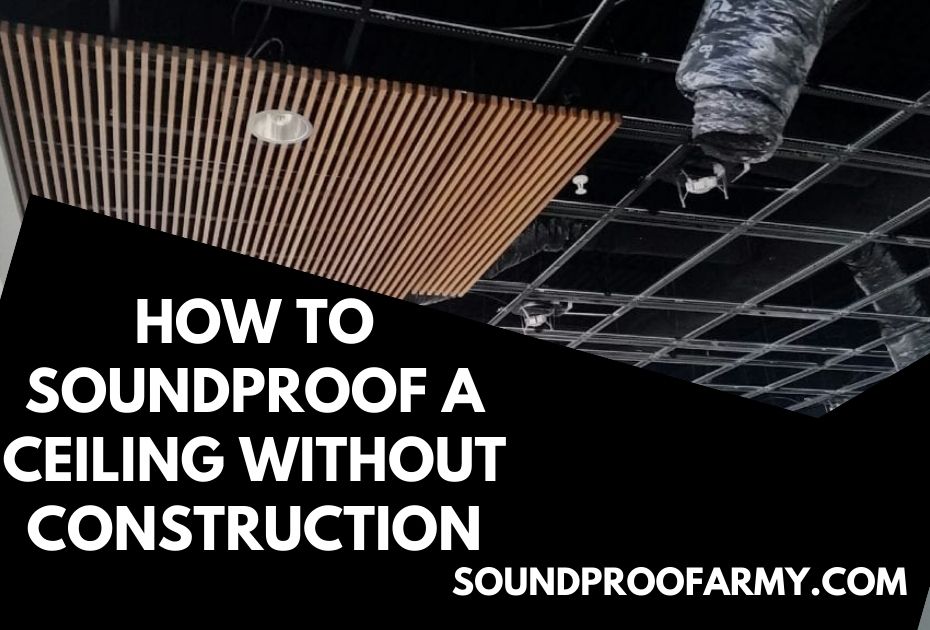
![How to Soundproof a Door with Household Items [14 Effective Ways]](https://soundproofarmy.com/wp-content/uploads/2021/07/How-to-Soundproof-a-Door-with-Household-Items.jpg)

